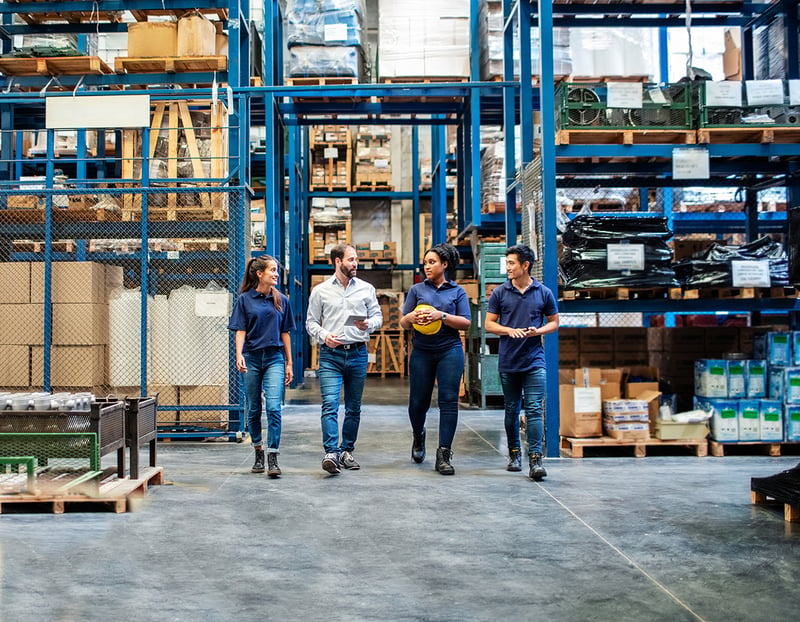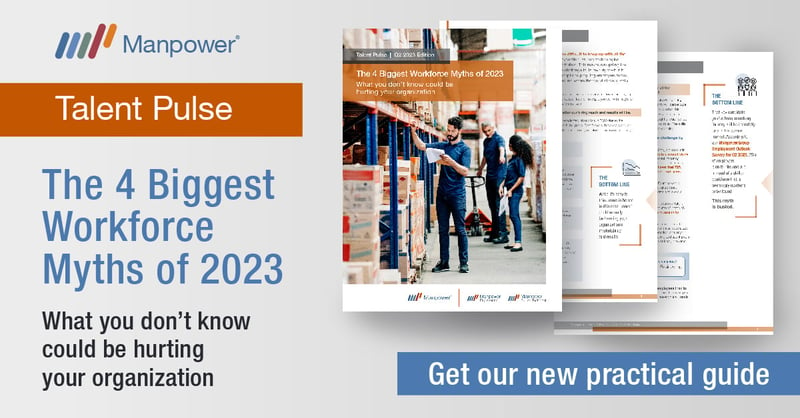If there is one thing we have learned in the last year, it is the ever-increasing need to focus on and invest in health and safety. As a world leader in innovative workforce solutions, ManpowerGroup has over 70 years of experience in keeping our clients, associates and employees safe, but just as with the rest of the world, COVID pushed us further and faster than we would have ever imagined. Our work to not only ensure the ongoing health and safety of our associates, but also partner with clients to strengthen their health and safety requirements, gave us a view on how the modern workforce will view health and safety going forward and how organizations can enroll their vendor-partners in their modern safety culture.
Building a culture of safety into the workforce requires an integrative approach. Though physical measures are foundational, a culture of safety is only arrived at by enrolling everyone: leadership, workforce, contingent workforce, and partners. While this is nothing new, the pandemic has shed a new light and new importance on health and safety in the workplace. Here are several examples of how Manpower has taken action to support a culture of safety:
- Associates – People come first, and when the pandemic hit, Manpower made sure that our associates were Work Ready. Beyond assessing our work sites with a new safety lens, we also made sure our people had the confidence that their health was our primary concern through enhanced safety onboarding, clear instructions about monitoring their health, and increased health checks, including fever, cough, shortness of breath, and recent contact.
- Client Resources – We made sure that our clients had access to the in-demand talent needed at that moment to ensure that they could reopen their doors while safeguarding their workforce. Manpower Work Ready staffing solutions included health survey collectors, temperature screeners, sanitization resources, and contract tracers to protect their work sites.
- Partnerships – When it comes to a culture of safety, working with your vendor-partners is critical. Manpower fully engaged in the planning and worked collaboratively with our clients to ensure that we had not only a good plan for the immediate need, but that plans were also evaluated for continuous improvement. This meant that health and safety extended to the full workforce of our clients, minimizing any potential vulnerabilities.
- Culture – This focus on safety isn’t going away and is highlighted in a number of ManpowerGroup’s Top 21 Trends in 2021 that are transforming the future of work. We’re seeing a revised hierarchy of individual needs, with concerns for health showing up as the number one consideration. We’re also seeing the level of employer responsibility for health and well-being rise, including emotional as well as physical factors, leading to a growing need for empathetic leadership skills. This is one reason that our sister brand, Right Management, has created its Inspirational Safety Leader program to help organizations take a fresh communication-based approach to safety.
A modernized, post-COVID take on health and safety must incorporate the lessons we all have learned in the last year. Our research continues to show that personal health and safety is on the minds of most workers, and having a holistic, integrative view of safety, inclusive of your full workforce, requires not only that you have ongoing collaboration with partners, but that you get to the heart of safety — your culture. People are at their best as employees when they feel a sense of ownership for proactively doing what is necessary for all to be successful. Getting to the heart of safety unleashes passion and advocacy, is grounded in individual and joint ownership, and bound together by a shared story of what we are creating together.




Comments